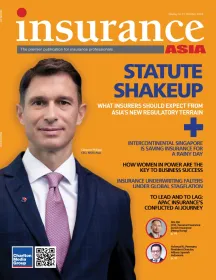Critical illness coverage penetration challenges: Understanding Singaporean Struggles and Solutions
By Neeraj KaushikSocietal discomfort around discussions of illness and mortality contributes to a reluctance to confront the need for adequate insurance coverage among Singaporeans.
In the bustling city-state of Singapore, where efficiency and progress intertwine seamlessly, the topic of critical illness coverage often emerges as a complex puzzle. Despite the nation's economic prosperity and high standard of living, many Singaporeans find themselves grappling with the intricacies and uncertainties surrounding this crucial aspect of insurance. As we delve into the reasons behind these struggles and explore potential solutions, it becomes evident that both societal norms and industry practices play significant roles in shaping the landscape of critical illness coverage in Singapore.
Singaporeans, renowned for their pragmatism and forward-thinking mindset, are no strangers to planning for the future. However, when it comes to critical illness coverage, several factors contribute to the challenges faced by individuals and families alike.
As per a recent survey, of all the respondents who indicated that their family member had faced a critical illness, 25% indicated that they lacked a CI plan to rely on.
The latest data from the Life Insurance Association of Singapore (LIA) claim that the CI protection gap narrowed to 74% in 2022 from 81% in 2017. Still, a chunk of Singaporeans lack protection regarding CI coverage needs.
One primary issue is the pervasive misconception that basic health insurance plans provide comprehensive coverage for critical illnesses. While MediShield Life, Singapore's national health insurance scheme, offers essential protection for hospitalisation and selected outpatient treatments, it often falls short in covering the extensive costs associated with critical illnesses such as cancer, stroke, or heart disease.
Moreover, the stigma surrounding critical illnesses and end-of-life planning remains a prevalent barrier in Singaporean society. Discussions about mortality and debilitating illnesses are often met with discomfort and avoidance, leading individuals to procrastinate or overlook the importance of adequate coverage. This cultural reluctance to confront the realities of illness and mortality can impede proactive decision-making regarding insurance, leaving individuals vulnerable to financial strain in times of crisis.
Additionally, the complex and ever-evolving landscape of insurance products in Singapore can overwhelm consumers, making it challenging to navigate through the myriad of options available. Policy terms, coverage limits, and exclusions often obscure the true extent of protection offered, leaving individuals unsure about the adequacy of their insurance plans. The lack of transparency and clear communication exacerbates this confusion, fostering a sense of distrust towards insurers and their products.
In light of these challenges, life insurers in Singapore must proactively address the underlying issues and adopt innovative strategies to enhance critical illness coverage accessibility and efficacy. One approach involves raising awareness and promoting financial literacy through targeted education campaigns. By demystifying the complexities of insurance and providing accessible resources, insurers can empower consumers to make informed decisions about their coverage needs and priorities.
Furthermore, insurers can leverage technology to streamline the insurance application and claims process, making it more convenient and user-friendly for policyholders. Digital platforms and mobile applications offer opportunities for enhanced customer engagement, enabling individuals to manage their policies, access relevant information, and seek assistance whenever needed. By embracing digital innovation, insurers can enhance the overall customer experience and foster greater trust and satisfaction among policyholders.
Collaboration with healthcare providers and government agencies is another avenue for insurers to expand their reach and improve the effectiveness of critical illness coverage. By forging partnerships with hospitals, clinics, and wellness organisations, insurers can develop integrated healthcare solutions that prioritise prevention, early detection, and holistic patient care. Furthermore, engaging with regulatory authorities and policymakers can facilitate the development of policies and initiatives that support greater inclusivity and affordability in insurance coverage.
Innovative product design is key to overcoming the limitations of traditional insurance offerings and meeting the evolving needs of Singaporean consumers. Flexible and customizable policies that cater to diverse lifestyles and preferences can enhance the relevance and appeal of critical illness coverage. Features such as accelerated benefit payouts, premium waivers, and coverage for alternative therapies can provide policyholders with greater peace of mind and financial security during challenging times.
Moreover, insurers can explore novel approaches such as income protection plans and wellness-focused incentives to incentivize proactive healthcare management and risk mitigation. By aligning incentives with healthy behaviours and positive lifestyle choices, insurers can create a win-win scenario where policyholders are rewarded for taking charge of their health while reducing the overall burden of healthcare costs.
Conclusion
The challenges surrounding critical illness coverage in Singapore are multifaceted, encompassing cultural, societal, and industry-related factors.
However, with a concerted effort from insurers, policymakers, and healthcare stakeholders, meaningful progress can be made towards enhancing accessibility, affordability, and effectiveness of critical illness coverage.
By embracing innovation, collaboration, and consumer-centricity, the life insurance industry in Singapore can play a pivotal role in safeguarding the financial well-being and resilience of individuals and families in the face of life's uncertainties.




















 Advertise
Advertise


